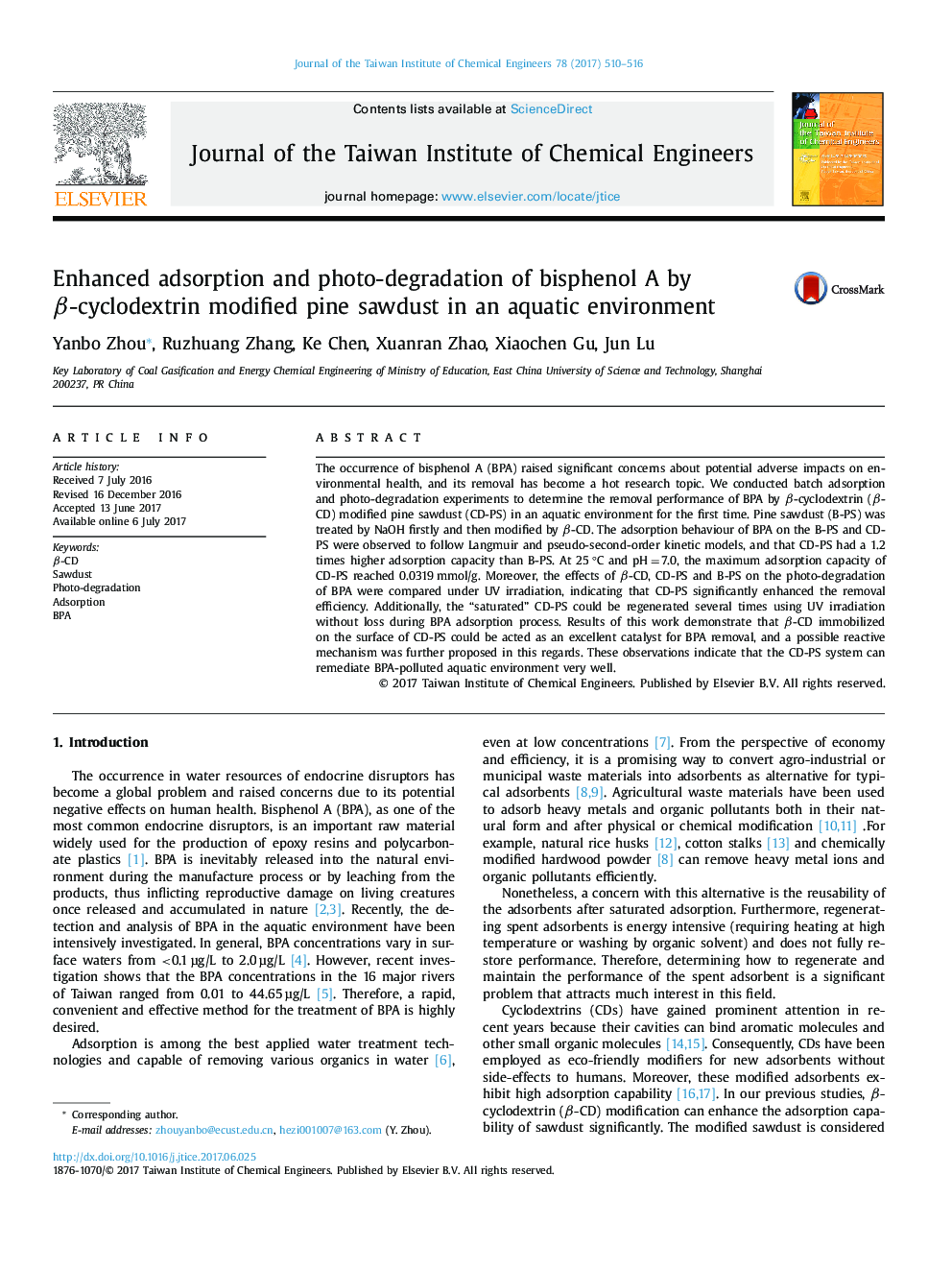| Article ID | Journal | Published Year | Pages | File Type |
|---|---|---|---|---|
| 4998678 | Journal of the Taiwan Institute of Chemical Engineers | 2017 | 7 Pages |
â¢The adsorbed BPA could be removed thoroughly by photo-degradation.â¢Î²-CD modification enhanced the adsorption and photo-degradation of BPA.â¢The kinetic study confirmed the photo-catalytic effect of the β-CD modified pine sawdust.
The occurrence of bisphenol A (BPA) raised significant concerns about potential adverse impacts on environmental health, and its removal has become a hot research topic. We conducted batch adsorption and photo-degradation experiments to determine the removal performance of BPA by β-cyclodextrin (β-CD) modified pine sawdust (CD-PS) in an aquatic environment for the first time. Pine sawdust (B-PS) was treated by NaOH firstly and then modified by β-CD. The adsorption behaviour of BPA on the B-PS and CD-PS were observed to follow Langmuir and pseudo-second-order kinetic models, and that CD-PS had a 1.2 times higher adsorption capacity than B-PS. At 25°C and pH = 7.0, the maximum adsorption capacity of CD-PS reached 0.0319 mmol/g. Moreover, the effects of β-CD, CD-PS and B-PS on the photo-degradation of BPA were compared under UV irradiation, indicating that CD-PS significantly enhanced the removal efficiency. Additionally, the “saturated” CD-PS could be regenerated several times using UV irradiation without loss during BPA adsorption process. Results of this work demonstrate that β-CD immobilized on the surface of CD-PS could be acted as an excellent catalyst for BPA removal, and a possible reactive mechanism was further proposed in this regards. These observations indicate that the CD-PS system can remediate BPA-polluted aquatic environment very well.
Graphical abstractDownload high-res image (140KB)Download full-size image
